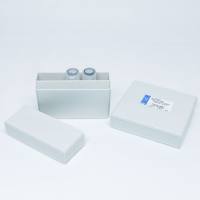Loose-Patch Voltage-Clamp Technique
互联网
1109
As mentioned by Cole (1968) the connections between life and electricity have long held the attention of investigators, with
observations dating from ancient examinations of the electric catfish Malapterurus
in 2600 B.C to modern examinations of the structure/function relationships within individual electrically active proteins.
Patch techniques use pipets with a smooth bore of less than one micron to 100 microns in diameter fashioned from capillary
tubing. With this method, discrete areas of membrane can be sampled by pressing the rim of the patch pipet against the cell
membrane to electrically isolate it from the external saline. Early experiments focally stimulated discrete areas of nerves
or muscle fibers with capillary pipets to substantiate the all-or-none principle for skeletal muscle-fiber contraction (Lucas,
1909; Pratt and Eisenberger, 1919). Later investigations used single patch pipets to both elicit and record ionic currents
from the same area of membrane (Strickholm, 1961). Currently, patch clamp techniques can be broken down into two broad categories
based on the electrical resistance of the seal between the cell membrane and the rim of the pipet. “Tight-seal” techniques
are associated with high seal resistances (>1 gigohm) while “loose-seal” techniques employ smaller seal resistances (kilo-
to megohm range).







